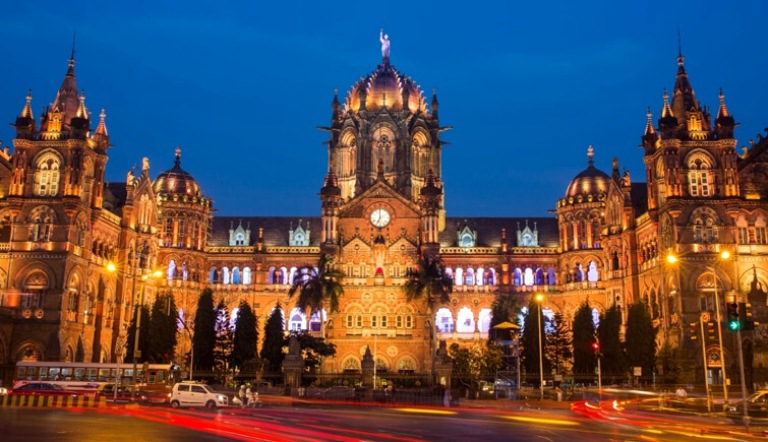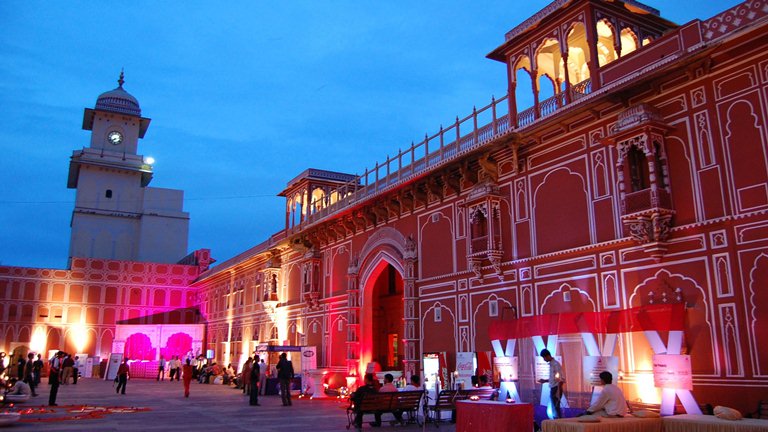
OVERVIEW- The famous Golden Triangle of India actually covers three most beautiful and captivating cities of the country ¬ Delhi (the capital of India), Agra (the city of Taj) and Jaipur (the land of Rajput kings). These cities are undoubtedly, the epitomes of Indian cultural, historical and architectural heritage and have all been the capitals of the princely states at least in the past. Expanding this we will take you to the hunting place of Maharajas of Jaipur in bygone era, Ranthambore National Park. The park is listed among one of the best places in India to see the royal predators in the forest. Enjoy a sightseeing tour of "City of Lakes & Palaces"- Udaipur before flying to Goa a beach destination. At last Mumbai, the City of Dreams and capital of Maharashtra rubs its shoulders with some of world’s most developed cities. Rajasthan with Beach Tour takes you on a fascinating journey from dry sands and beautiful palaces of Rajasthan to the beautiful and alluring water bodies of Goa. While on the tour enjoy the richness of architecture design and natural beauty at the same time.Â
DELHI- New Delhi, capital of India is a mix of the ancient and modern architecture. This 3rd largest city of India unwinds a picture rich with culture, architecture, and human diversity. Divided in two parts, Old Delhi & New Delhi, the city is a travel hub of Northern India and exerts a beguiling charm on visitors.
AGRA- The Land of culture and heritage. Agra is the city of the inimitable Taj Mahal. Agra is famous for its marble inlay work, leather goods, brasswares, finely worked precious and semi-precious stone jewellery and ornate zari embroidery.
RANTHAMBORE- It is located in the foothills of Aravali Ranges near the small town of Sawai-Madhopur. It is one of the India's foremost illustrations of Project Tiger. A fine example of Project Tiger, Ranthambore was declared a National Park in 1980.
JAIPUR- Jaipur is remarkable for its marvelous architecture and town planning as it is for the lively spirit of the people who inhabit it. The city presents a unique synthesis of culture that has to be experienced in order to be appreciated. The old Jaipur painted in Pink, the lively spirit of fanfare, festivity and celebration of the people adequately match the colorful and intricately carved monuments.Â
UDAIPUR- One of the most beautiful cities of Rajasthan, located on the banks of Lake Pichola, also known as a 'Jewel of Mewar'. The most romantic city of India can take the tourist into paroxysm of heaven. The center of attraction vibrates around the shimmering blue waters and the royal white marble palaces constructed with unique artistic insight.
GOA- A Tourist Paradise, Goa has magnificent scenic beauty and the architectural splendors of temples, churches and old houses. Popularly called as “The Pearl of the Orient†has much more than just beaches and seas. The natural landscapes, the waterfalls, the forests, the spice farms, all are unique in their own way that truly shows an entirely new side of Goa. Goa is the perfect place where you will find a blend of traditional and modern aspects of life.
MUMBAI- Mumbai is the capital city of Maharashtra and is the financial powerhouse of the country. Also well known commercial capital of India, fast paced cosmopolitan city. This historic city, extends along the sea, has grand buildings and is the center of India's Hindi film industry. The city is famous as the center of glamour and glitz due to the presence of Indian film industry. Mumbai is also a historical city having many attractions to offer to a visitor.
Tour Destination: Delhi – Agra – Ranthambore – Jaipur - Udaipur – Goa – Mumbai - Delhi
Travel Duration: 16 Nights/17 Days
DAY 1: DELHI-Â Arrive in Delhi and later transfer to the hotel. Evening free for local activities and shopping the local markets.
Overnight at Hotel.
DAY 2: DELHI-Â After breakfast, enjoy full day city tour of Old Delhi & New Delhi visiting
RED FORT- This is a magnificent fort with beautiful artwork of red sandstone on the banks of river Yamuna. It is a huge complex of gardens and pavilions and marble palaces.
JAMA MASJID- This is the largest mosque in India, located opposite to the Red Fort, it was again the great Mughal Emperor Shah Jahan behind this architectural masterpiece.
RAJ GHAT- Built on the banks of the legendary Yamuna, which flows past New Delhi, Raj Ghat-the last resting place of Mahatma Gandhi, the father of the nation.
INDIA GATE- Built as a memorial to commemorate the 70,000 India soldiers killed in World War I, India Gate was designed by Sir Edwin Lutyens and completed in 1931. The green, velvety lawns at India Gate, particularly, are a popular evening and holiday rendezvous for young and old alike.
PRESIDENT’S HOUSE- New Delhi, centers around the Rashtrapati Bhawan. It is architecturally a very impressive building standing at a height, flowing down as it were to India Gate. HUMAYUN’S TOMB- The emperor’s grieving widow, Haji Begum, built Humayun’s Tomb the first mature example of Mughal architecture in India, in 1565 AD.
LAXMI NARAYAN TEMPLE- Also called the Birla Mandir it was built in 1938; the temple is an ideal introduction to some of the gods of the India pantheon.Â
LOTUS TEMPLE- The Bahai’s Temple, is shaped like a lotus. It is an eye-catching edifice worth exploring. Built by the Bahai’s community, it offers the visitor a serenity that pervades the temple and its artistic design.Â
QUTAB MINAR- It is among the tallest and famous towers in the world. Qutab Minar is famed as the highest brick minaret of the world, located amidst the lush greens of South Delhi.Â
Overnight at Hotel.
DAY 3: DELHI - AGRA- Drive towards The Land of culture and heritage – Agra. Transfer to hotel, and after lunch visitÂ
TAJ MAHAL- It is the most beautiful monument in Agra. The beauty and grandeur of the Taj Mahal has made it one of the Seven Wonders of the World. Built by Shah Jahan in memory of his wife-Mumtaz Mahal, the Taj Mahal is regarded as one of the most beautiful monuments in the world. A beautiful gift from a Mughal emperor to his deceased wife, the Taj Mahal is a symbol of love and beauty.Â
Overnight at Hotel.
DAY 4: AGRA – FATHEPUR SIKRI - RANTHAMBORE- After breakfast, visit Agra viewing
AGRA FORT- Built in red sandstone, this huge fortress on the bank of the Yamuna. The fort house has many beautiful palaces and mansions, which include Jahangiri Mahal, Khass Mahal, Diwan-i-Khass and Diwan-i-Aam.
ITMAD-UD-DAULA TOMB- Also known as Baby Taj, this tomb is a daughter's tribute to her father. Built in 1628 by Nurjahan in memory of her father Mirza Ghiyas Beg.
Check-Out from the hotel, and drive towards Ranthambore- the largest national park of Rajasthan, enroute visiting Fathepur Sikri
FATHEPUR SIKRI- Once the capital of the Mughal emperor Akbar, a deserted, red sandstone city built by the Mughal Emperor Akbar in the 16th century.
Further continue your drive to Ranthambore. Transfer to hotel and evening time to relax.
Overnight at Hotel.
DAY 5: RANTHAMBORE-Â After breakfast visit
RANTHAMBORE NATIONAL PARK- this wildlife sanctuary is famous for its Tigers and is favorite with photographers. Tigers, the park's pride makes it one of the best places in the country to observe them. Apart from that a large numbers of Sambar, Chital, Nilgai, Gazzelle, Boars, Mongoose, Indian Hare, Monitor Lizards and a large number of birds.
For the wildlife savvy, Ranthambore wildlife sanctuary has an intense diversity of flora and fauna with 300 trees, 50 aquatic plants, 272 birds, 12 reptiles and 30 mammals to count a few.
Best time to visit- the ideal time to visit the sanctuary is during the months of October-March and April –June.
RANTHAMBORE FORT & JOGI MAHAL- The park got its name from the Ranthambore Fort, which sits on a rocky outcrop in the heart of the Park. The fort, which dates back to the 10th century and is probably the oldest existing fort in Rajasthan, was a vital citadel for control of Central India and particularly the Malwa plateau.
The entry point to the Ranthambore National Park goes straight to the foot of the fort and the forest rest house, JogiMahal. Also it has the second-largest Banyan tree in India.Â
Overnight at Hotel.
DAY 6: RANTHAMBORE - JAIPUR-Â Today, drive towards Jaipur- the pristine jewel in the desert sands of Rajasthan. Transfer to hotel and evening time to relax.
Overnight at Hotel.
DAY 7: JAIPUR-Â After breakfast visit the Pink City viewing
AMER FORT- A beautiful complex of palaces, halls, pavilions, gardens and temples built by Raja Man Singh. Tourists often ride on the elephant back to the Singh pool and the Jaleb Chowk.Â
JAL MAHAL- The water palace is a large dimension palace designed using architectural and painting patterns of the Indian culture, as it was a few centuries ago. It is situated right in the middle of the Man Sagar Lake.
HAWA MAHAL- One of the most common and popular tourist attractions in Jaipur. This five-storey building was used as a veil by the royal women folk to watch the proceedings on the road below.Â
CITY PALACE- In the heart of the old city is former royal residence built in a blend of the Rajasthani and Mughal styles. The palace also has an art gallery with an excellent collection of miniature paintings, carpets, royal paraphernalia and rare astronomical works in Arabic, Persian, Latin and Sanskrit, acquired by Sawai Jai Singh II to study astronomy in detail.
JANTAR MANTAR- A stone observatory, largest of Jai Singh’s five remarkable observatories. The observatory was built to study the movement of stars. The observatory is built in stone and marble.Â
Overnight at Hotel.
DAY 8: JAIPUR - UDAIPUR-Â Next morning drive towards Udaipur. Transfer to hotel, in the evening enjoy the boat ride on the picturesque Lake Pichola.Â
Overnight at hotel.Â
DAY 9: UDAIPUR-Â Take on a full day city tour of The City of Lakes- Udaipur.
LAKE PICHOLA- This lake presents the picturesque beauty of Udaipur. Encircled by numerous palaces on all sides, it houses various islands where the famous Jag Mandir and Jag Niwas are situated.
Maharaja Jagat Singh II built Lake Palace- the palace. It is situated on Lake Pichola, and it appears to be floating on the lake.
CITY PALACE- The largest palace of Rajasthan, it represents the architectural and artistic evolution of Mewar over the centuries. The palace is divided into various sections, each with its own distinctiveÂ
style.
SAHELIYON KI BARI- This garden was the picnic spot for the 48 royal ladies who were offered to the prince as dowry. The gardens here have lush green lawns & beautiful fountains in the shape of birds - presenting a wonderful sight!
JAGDISH TEMPLE- One of the largest and popular Vishnu Temples of Northern India, this temple has exquisite carvings and four other smaller shrines dedicated to other deities.
AHAR- An ancient capital of Mewar, Ahar is the favorite haunt of archaeologists and research scholars. It houses various famous monuments and temples like the Royal Cenotaphs, Adinath Temple, and Mahavira Temple.
Overnight in hotel.
DAY 10: UDAIPUR - GOA- Today catch a connecting flight to the ‘Jewel of India’- Goa. Transfer to the hotel. Later in the day, visit the gothic churches, crumbling forts, temples, beaches, coconut groves and villages.
PANAJI- The capital of Goa, and was called Panjim during the reign of Portuguese. It is one of the India’s smallest and most charming state capital.
VASCO DA GAMA- The town was originally called Sambhaji. This well planned coastal town is the oldest railway terminus.
In the evening you can walk around a beach and relax. One can enjoy Mandovi River Cruise which has food, drinks, and live bands performing Goan dances.
Overnight at hotel.
DAY 11: NORTH GOA TOUR-Â Get ready to visit the most famous beaches and other attractions of North Goa.
BEACHES- Goa is famous for its lovely golden beaches. The beaches here have been accepted as a matter of life, the exotic cuisine backing the pleasure of have on sun and sand, water sports like water scooters and water gliding, a glass of fenny and beer, shopping on the beachside, and most romantic midnight bonfire on the beach. Enjoy on the beach at sunset, meditate and feel relaxed. Some beaches are popular for its nightlife with some very famous clubs such as Britto's, Tito's and Mambos.
SOME OF THE POPULAR BEACHES ARE-Â Anjuna Beach, Baga Beach, Calangute Beach, Condolim Beach, Dona Paula Beach, Vagator Beach and many more
CHURCHES- The most famous churches in Goa that attract large number of visitors are Goa Basilica of Bom Jesus which is a world heritage monument and Goa Se Cathedral which is dedicated to St. Catherine. The other important churches are the Church of Condolim Church, St Francis of Assini, Church of Lady of Rosary, Church of St Cajatan and The Rochal Seminary.
OTHER TOURIST SPOPTS- Fort Aguda, Goa Science Centre, Dona Paula etc.
In the evening visit the various Goa flea markets which sell a variety of items like clothes, jewelry, spices and accessories. Music and dance performances are also a part of the flea markets, the most popular of which are Anjunna Wednesday Flea market, Arpora Saturday Night market, Mapusa Friday market and Calangute Bazaar.
Overnight at hotel.
DAY 12: SOUTH GOA TOUR-Â Get ready to visit the most famous beaches and other attractions of South Goa which are less frequented by tourists and are oases of solitude and tranquility.Â
SOME OF THE POPULAR BEACHES ARE-Â Agonda Beach, Benaulim Beach, Palolem Beach, Majorda Beach and Colva Beach, among others.Â
MARGOA- Goa’s second largest city and commercial metropolis of South Goa. It is famous for its ancient cultural heritage and traditional customs of the people of Goa.Â
You can take a leisurely stroll, revel in the soothing ambience and enjoy delicious food at the shacks or at a local eatery. You could also try out several kinds of adventure sports.
Overnight at Hotel.
DAY 13: LOCAL GOA- Today take your own time, visit casinos, relax on the beaches, and enjoy water sports like windsurfing, jet skiing, water skiing, paragliding etc. Go out for shopping; buy the souvenir of this magnificent land as a memorable sojourn. The most popular of the souvenir items are the excellent local handicraft items. The handicrafts items include brassware, terracotta, shell work, crochet, carved furniture, bamboo work, papier-mâché, etc
The famed cashew nuts of Goa is another most wanted items of the tourists. The nuts are available in a wide variety of tastes ranging from plain, salted and masala. The prices vary based on the quality and flavor.
For the fashion lovers Goa has many fashion shops, located in fabulous old Goan houses. These shops make the best selections in home styling and fashion available to the tourists at quite reasonable prices.
Overnight at Hotel.
DAY 14: GOA - MUMBAI-Â After breakfast, transfer to airport to catch flight to Mumbai. Later transfer to hotel. Evening free for leisure around beaches.
DAY 15: MUMBAI-Â After breakfast, full day city tour of Mumbai
ELEPHANTA CAVES- located on an island about 10 kilometers away from the shores of Mumbai. These caves comprise of temples carved from solid rock dating back to the 7th century. The main attraction is the three-headed bust of Lord Shiva, famously known as ‘Trimurti’.
GATEWAY OF INDIA- The Gateway of India was built during the British Raj in Mumbai. Located on the waterfront in the Apollo Bunder area in South Mumbai, the monument is companioned by the Arabian Sea.
PRINCE OF WALES MUSEUM- The Museum of Western India is the main museum in Mumbai. The museum is located in the heart of South Mumbai near the Gateway of India. The museum building is built in the Indo-Saracenic style of architecture, incorporating elements of other styles of architecture like the Mughal, Maratha, Jain, etc and the museum building is surrounded by a garden of palm trees and formal flower beds.
TARAPOREWALA AQUARIUM- Taraporewala Aquarium on Marine Drive has a good collection of sea and fresh water fish and other marine life.
CHOWPATTY BEACH & MARINE DRIVE- It is one of the most famous public beaches in Mumbai. The beach is famous for Ganesh Chaturthi celebrations. Marine Drive is a 3-kilometre-long boulevard in South Mumbai. It is a 'C'-shaped six-lane concrete road along the coast, which is a natural bay and links Nariman Point to Babulnath and Malabar Hill.
KAMLA NEHRU PARK- The park covers an area of 4,000 square feet. Located atop of Mumbai's Malabar Hill, it is named after Kamala Nehru, the wife of India's first Prime Minister of India, Jawaharlal Nehru.
HANGING GARDEN- These Gardens are terraced gardens perched at the top of Malabar Hill, on its western side, just opposite the Kamala Nehru Park.Â
Overnight at hotel.
DAY 16: MUMBAI-Â Today continue sightseeing of Mumbai viewing
HAJI ALI DARGAH- The Dargah is located on an islet off the coast of Worli in the Southern Mumbai. Near the heart of the city proper, the dargah is one of the most recognisable landmarks of city. An exquisite example of Indian Islamic architecture, the dargah contains the tomb of Sayed Peer Haji Ali Shah Bukhari.
SIDDHIVINAYAK TEMPLE- The temple is devoted to Ganesh, the elephant headed God for Good Fortune.Â
ISKCON TEMPLE- Hare Krishna Land is set upon four acres of prime land and a stone throw away from Juhu beach, Mumbai. Founder of ISKCON inspired the construction of one of India’s most beautiful temple of Lord Krishna in Mumbai.
JUHU BEACH- Juhu Beach is one of the most famous beaches in Mumbai. The beach is famous for its Mumbai street food, notably bhelpuri, pani puri, and pav bhaji. Juhu beach is also a very popular place for watching aircraft as planes from Chhatrapati Shivaji International Airport.Â
Overnight at hotel.
DAY 17: MUMBAI DEPARTURE
After breakfast, depart to airport to catch your flight/train towards onward destination.
Distance & Time (Approx)
- Delhi - Agra: 225 kms/04 hrsÂ
- Agra - Ranthambore: 260 kms/06 hrs
- Ranthambore - Jaipur: 165 kms/04 hrs
- Jaipur – Udaipur: 400 kms/06 hrs
- Udaipur – Goa (By Flight): 06 hrs
- Goa – Mumbai (By Flight): 01 hrs 30 mins
New Delhi at a Glance
- Population: 16,787,941
- Area: 1,484 sq km
- Geo Location: North
- Average Climate: Summer extends from Apr. to Jun. (25°C to 46°C), Winter from Oct. to Mar. (3 °C - 30°C), and Monsoon from Jul. to Sep. (25°C to 35°C).
- Best Time to Visit: Throughout the year, though the best climate is experienced from Sep. to Apr.
- STD Code: 011
- Airport: Indira Gandhi International Airport
Agra at a Glance
- Population: 1.80 Million
- Area: 4,027 sq km
- Geo Location: Uttar Pradesh (North India)
- Average Climate: 1°C - 32°C
- Best Time to Visit: October - March
- STD Code: 0562
Ranthambore at a Glance
- Population: NA
- Area: 282 sq km
- Geo Location: Rajasthan (North India)
- Average Climate: 20 °C - 35 °C
- Best Time to Visit: October - May
- STD Code: 07462
Jaipur at a Glance
- Population: 3.073 Million
- Area: 111.80 sq km
- Geo Location: Rajasthan (North India)
- Average Climate: 4°C - 30°C
- Best Time to Visit: September - March
- STD Code: 0141
- Airport: Jaipur Airport
Udaipur at a Glance
- Population: 7.51 Lakhs
- Area: 37 sq km
- Geo Location: Rajasthan (North India)
- Average Climate: 3°C - 32°C
- Best Time to Visit: September - March
- STD Code: 0294
- Airport: Udaipur Airport
Goa at a Glance
- Capital City: Panaji
- Population: 1.817 Million
- Area: 3702 sq kms
- Geo Location: Goa (West India)
- Average Climate: 25°C - 30°C.
- Best Time to Visit: October – March
- STD Code: 0832
- Airport: Goa International Airport
Mumbai at a Glance
- Population: 18.41 Million
- Area: 603 sq kms
- Geo Location: Maharashtra (West India)
- Average Climate: 28°C
- Best Time to Visit: November - February
- STD Code: 022
- Airport: Mumbai International Airport
Need Aspark Help?
For Tour Packages, Vehicle Rental and Customer Care Support.
+91 9999 31 7846
booking@asparkholidays.comWhy Travel with Us?

Excellent Support
Our Team Available 24x7 for Customer support
Best Price & Savings
We Offer the Most Competitive Prices.
.jpg)
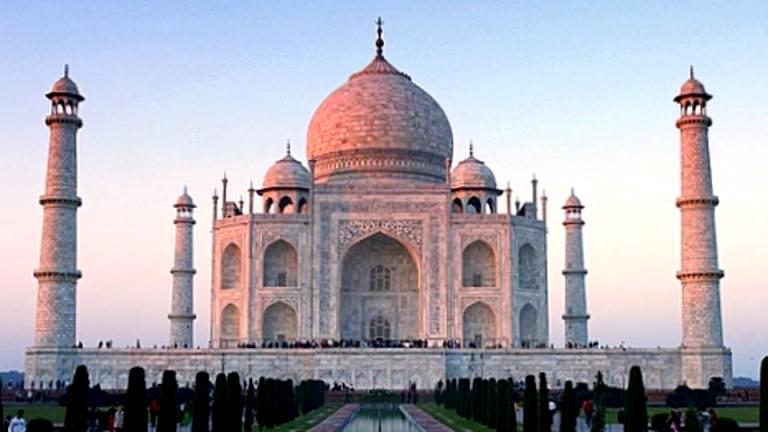
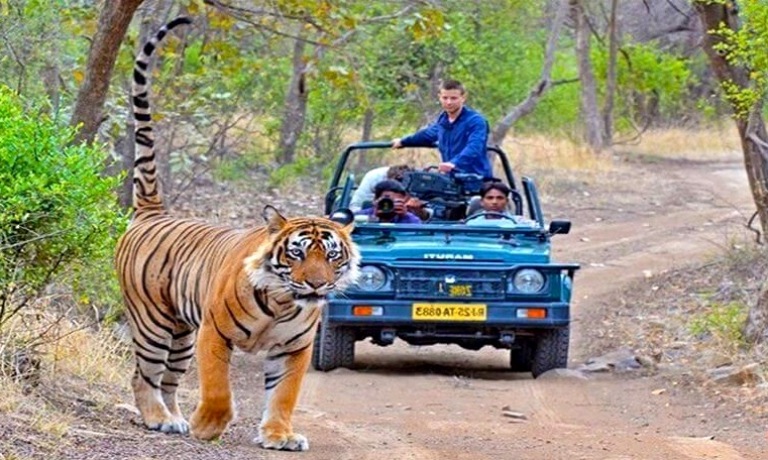
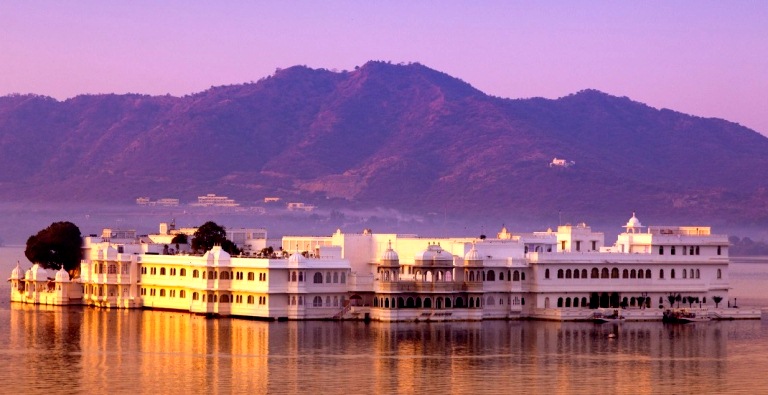
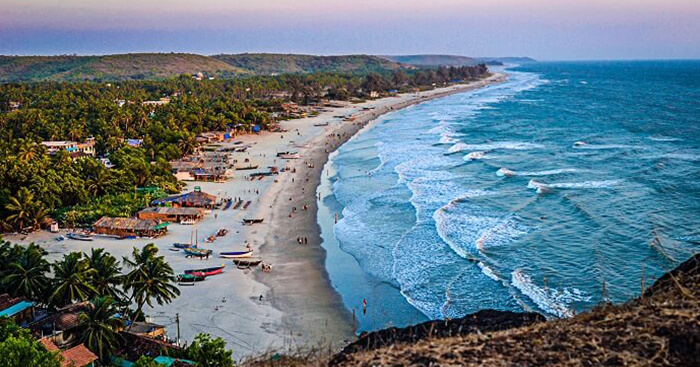
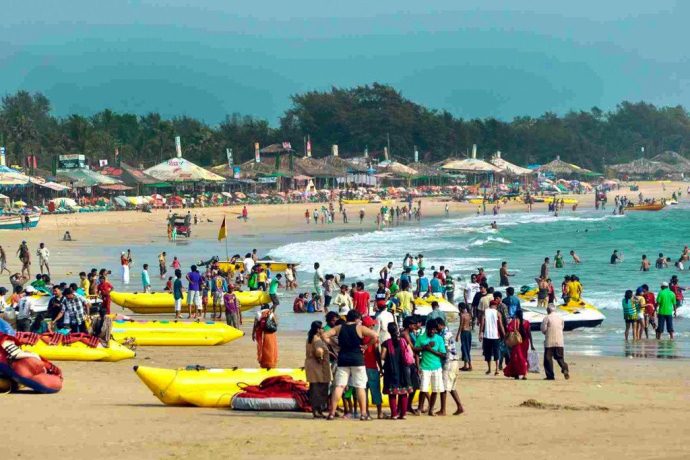
.jpg)
